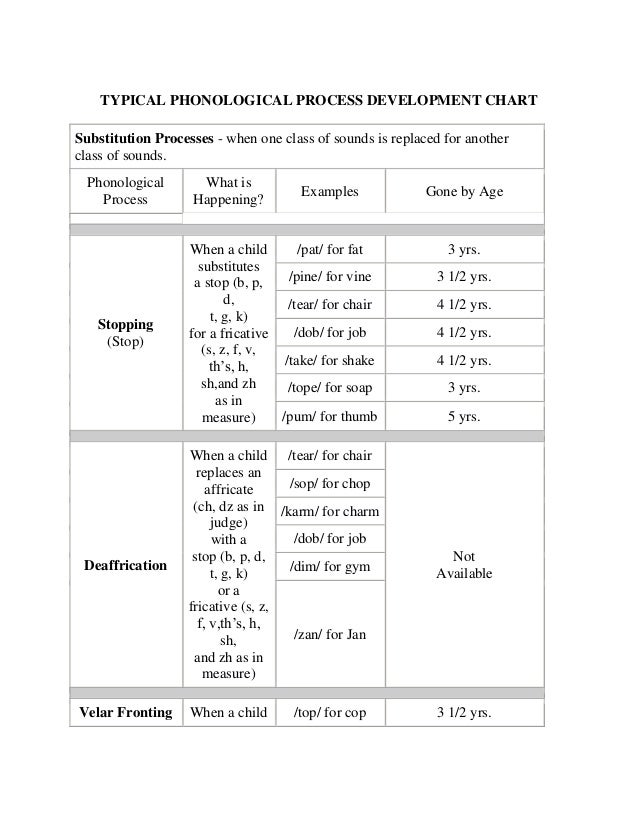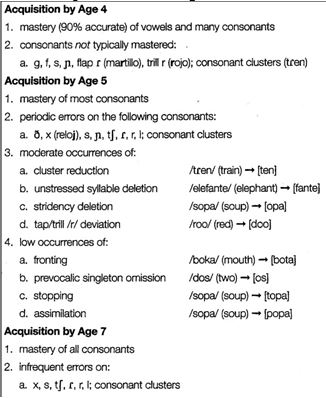

Stopping usually disappears by the time they’re between three and three and a half, depending on the airflow sound we’re talking about.Įxample: Saying “ Titty Tat” instead of Kitty CatĪssimilation happens when your child replaces one consonant in a word with a consonant that appears somewhere else in that same word, like when a little one says “titty tat” for kitty cat or “mime” for mine. One of my (Katie’s) little ones said “bench bies” for french fries, “stopping” the /f/ sound and making it a /b/.


For example, they might say ‘pish’ instead of ‘fish’, because the /p/ sound doesn’t have airflow but the /f/ does. With stopping, little ones will use a sound that does not have airflow in place of a sound that should. Don’t worry too much if your child is fronting right now, it should disappear by the time they turn three and a half.Ĭertain speech sounds require breath or airflow. They’re using the sound made in the front of the mouth- the /t/ or the /d/ in our examples-to simplify speech, because those back-of-throat sounds can be trickier to figure out for them! OR it could be that they get more input from the sounds made in their throat. It can sound like them saying ‘tup’ for ‘cup’ or ‘do’ instead of ‘go’. That’s super typical until kids are about four! At that point, we’d expect to see them using the correct production.įronting happens when your toddler makes speech sounds that are supposed to be made in the back of their throat (like the /c/ in ‘cup’ or the /g/ in ‘gulp’) in the front of their mouth. They might stay ‘poon’ or ‘soon’ for ‘spoon’, or ‘tar’ instead of ‘star’. When a word has two consonants right next to each other-the way the s and p are in ‘spoon’-little ones will often pick one sound to say and leave out the other one. Final consonant deletion is completely typical and not an issue at all, as long as it disappears by 39 months! It could also be them saying “ha” instead of a hat, and leaving off the final /t/ sound. That means saying “cu” for cup-leaving off the /p/ sound. Many children will leave off (or delete) the last sound of a given word to simplify it. Your little one may be simplifying their speech in these completely age-appropriate ways: The majority of these patterns are going to disappear by age 3. Related: What To Do When You Can’t Understand Your ChildĬommon Speech “Mistakes” Toddlers Make (And When They Typically Go Away)Īll kids, speech delay or not, are going to use phonological processes: patterns of sound errors that typically developing kids use to simplify speech as they’re learning to talk.
#Age of phonological processes how to#
We have some ideas for how to help them below! (And you can always seek out further guidance from your pediatrician or an SLP!) If they do, you don’t need to worry too much. Read through the common speech “mistakes” toddlers make, which we’ve listed below, and find out if their speech quirks fall within what’s considered typical.

Many parents struggle to understand their little ones. If you don’t feel like an expert decoder of your child’s toddler speech, know that that’s okay, too. If You Struggle To Understand Your Toddler… So just like some kids sit up earlier than others, kids your child’s age may say some sounds more clearly than yours, and that’s okay! So, sometimes it’s good to ask a grandparent, babysitter, or somebody who’s not around them quite as much as you how they would rate your child’s speech, too-just to be sure.Īnd remember, just like everything else in development, there’s a range for what’s considered typical. If You Understand Your Toddler Really Well…īecause you’re with your child the majority of the time, you are an expert decoder! Your first instinct might be to say you can understand them 90% of the time. Here’s what we expect based on typical development milestones and averages: It’s pretty common to not be able to understand everything your toddler says. These little tricks they use can be super cute, a little confusing, and sometimes, very tough to understand because they limit what we call their intelligibility, or their ability to be understood. Toddlers do a lot of communication gymnastics to help themselves as they learn to properly pronounce all speech sounds.


 0 kommentar(er)
0 kommentar(er)
